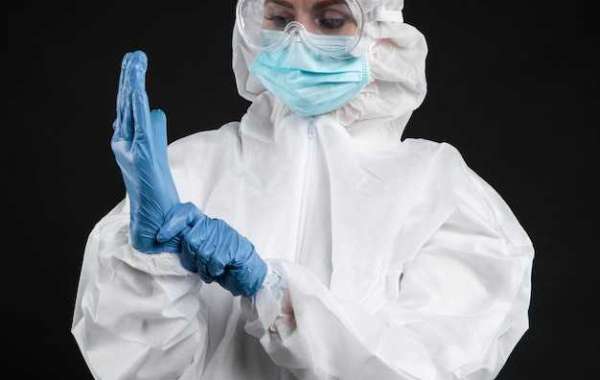Protective clothing plays a crucial role in safeguarding individuals from various hazards, including chemicals, biological agents, heat, flames, and physical injuries. Whether you're working in a hazardous environment or engaging in outdoor activities, wearing the appropriate protective clothing can significantly reduce the risk of injury or illness. In this comprehensive guide, we'll explore the different types of protective clothing, their purposes, and why they are essential for personal safety.
Understanding Protective Clothing:
Protective clothing refers to garments or equipment designed to shield individuals from potential risks in their environment. These risks can vary widely depending on the nature of the task or activity, ranging from exposure to harmful substances to protection against extreme temperatures or physical impact.
Types of Protective Clothing:
Chemical Protective Clothing:
- Designed to shield against exposure to hazardous chemicals, acids, and other corrosive substances.
- Typically made from specialized materials such as rubber, neoprene, or Tyvek, which offer resistance to chemical penetration.
- Common examples include chemical-resistant suits, gloves, and aprons worn by workers in industries such as manufacturing, agriculture, and healthcare.
Biological Protective Clothing:
- Intended to protect against biological hazards such as viruses, bacteria, and other microorganisms.
- Often used in healthcare settings, laboratories, and biohazard cleanup operations.
- May include items like coveralls, masks, gloves, and goggles designed to prevent the transmission of infectious agents.
Thermal Protective Clothing:
- Designed to provide insulation and protection against extreme temperatures, both hot and cold.
- Used in industries such as firefighting, foundries, and cold storage facilities.
- Materials like fire-resistant fabrics, insulated layers, and reflective coatings help mitigate heat or cold exposure.
Flame-Resistant Clothing:
- Specifically engineered to withstand exposure to flames and high temperatures.
- Essential for workers in industries where fire hazards are prevalent, such as welding, construction, and oil refineries.
- Made from flame-resistant materials like Nomex, Kevlar, or treated cotton to prevent ignition and minimize burn injuries.
High-Visibility Clothing:
- Designed to enhance visibility in low-light conditions or high-risk work environments.
- Typically worn by construction workers, road crews, and emergency responders to improve safety and prevent accidents.
- Incorporates fluorescent colors and reflective strips for maximum visibility during daylight and nighttime hours.
Importance of Protective Clothing:
Wearing appropriate protective clothing is crucial for several reasons:
Injury Prevention:
- Protective clothing acts as a barrier between the wearer and potential hazards, reducing the risk of injuries such as cuts, burns, or chemical exposure.
Health Protection:
- Certain types of protective clothing, such as respirators and coveralls, help prevent the inhalation or absorption of harmful substances, safeguarding the wearer's health.
Regulatory Compliance:
- Many industries are subject to regulations mandating the use of specific protective clothing to ensure compliance with safety standards and regulations.
Enhanced Performance:
- Comfortable and well-designed protective clothing allows workers to perform their tasks more efficiently without compromising safety, leading to increased productivity.
Peace of Mind:
- Wearing protective clothing instills confidence and peace of mind, knowing that one is adequately protected from potential risks in their environment.
Tips for Choosing and Using Protective Clothing:
Assess Risks:
- Identify potential hazards in your environment to determine the appropriate type of protective clothing needed.
Select Appropriate Gear:
- Choose protective clothing that is specifically designed to address the identified risks and meets relevant safety standards.
Ensure Proper Fit:
- Properly fitted protective clothing ensures maximum coverage and comfort while minimizing the risk of snagging or entanglement.
Maintain and Inspect:
- Regularly inspect and maintain protective clothing to ensure it remains in good condition and provides adequate protection.
Follow Usage Guidelines:
- Adhere to manufacturer recommendations and usage guidelines for the proper care and use of protective clothing to maximize effectiveness.
Conclusion:
Protective clothing is a vital component of personal safety in various industries and activities. By understanding the different types of protective clothing available and their purposes, individuals can make informed decisions to mitigate risks and protect themselves from potential hazards. Remember, wearing the right protective clothing not only enhances safety but also promotes confidence and peace of mind in challenging environments. Stay safe, stay protected!








